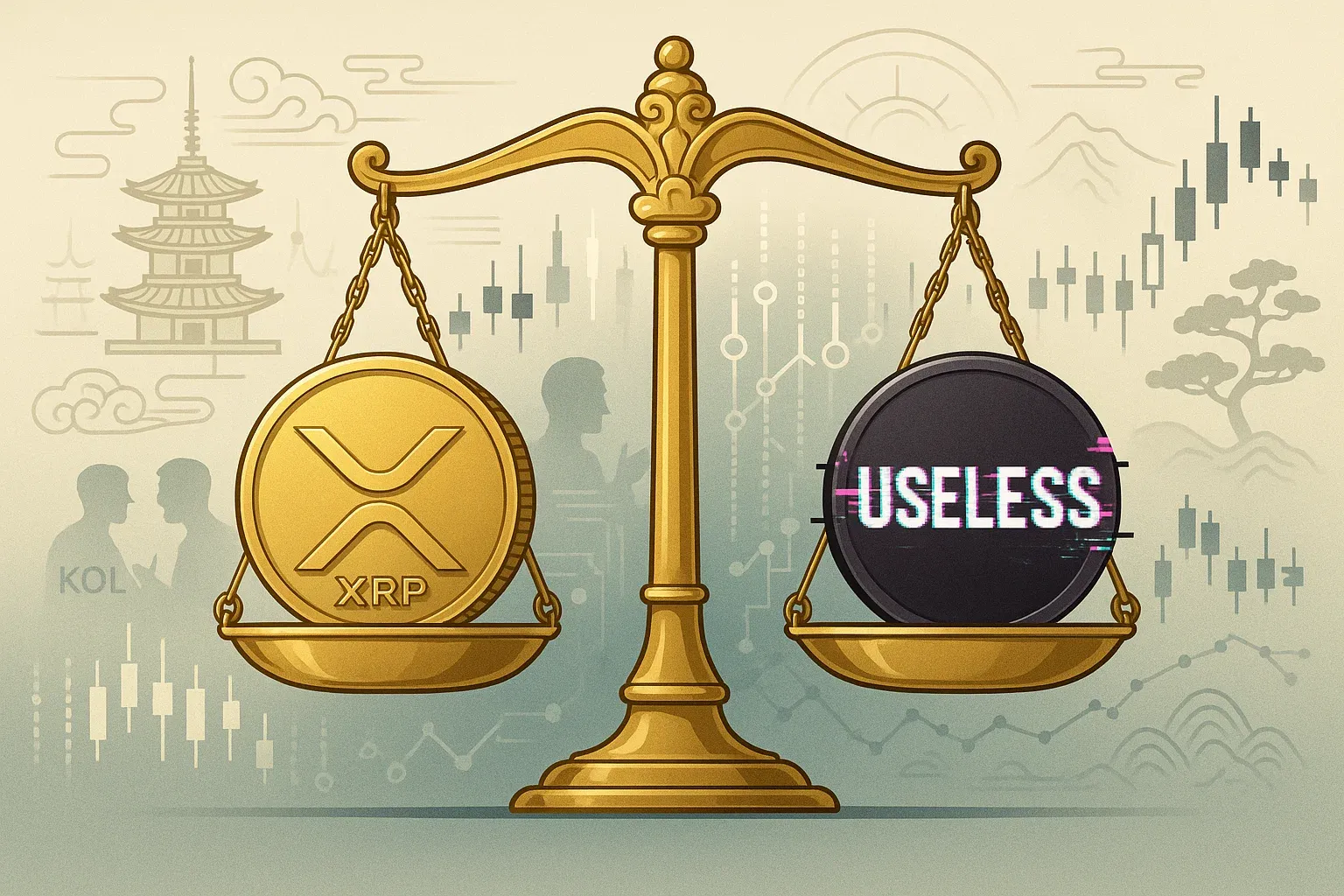
South Korea and Memecoin: The Revenge of the Market
South Korea is leading the memecoin revolution with USELESS, reflecting a generational shift in the way the crypto market is experienced and understood.

South Korea is leading the memecoin revolution with USELESS, reflecting a generational shift in the way the crypto market is experienced and understood.

Get the latest news, learn from experts, discover new tools, and find inspiration right in your inbox.
No spam. Unsubscribe anytime.
From MIT to MicroStrategy CEO—why he moved corporate cash into Bitcoin and shifted Wall Street.
South Korea has long been known for its disproportionate influence on the altcoin markets, from the euphoria over XRP that drove its price up 400% last year, to the current obsession with a token that openly describes itself as 'worthless'.
Bradley Park, an analyst at Seoul-based DNTV Research, told CoinDesk that South Korean KOLs (Key Opinion Leaders) are key to the $USELESS phenomenon.
Yeomyeon, a Korean KOL and liquidity provider who joined USELESS early on, overcame a 50 per cent slump and is currently making consistent profits: he is the centrepiece of the narrative.
"He made a lot of money during the Trump coin craze and, even with USELESS, he made money in the beginning and now he just holds it," Park told CoinDesk. "There's really no way to get out without a listing on CEX, so they're all waiting for that one."
Park has been monitoring Yeomyeon's wallet behaviour and noted that many Korean retail investors are mimicking his moves, impressed by his initial conviction. Some wallets linked to Jupiter insiders on Solana are also following him.
JUP$0.41132 are holding up. The rise of USELESS reflects a broader evolution in Korean market behaviour.
"I really believe that Korean users are no longer just 'takers' of cash," Park said. "They are starting to understand the market and become real global players."
The return of Bonk Guy and the rebirth of USELESS: Korea embraces memecoins and the irony of the market
Bonk Guy, one of BONK's earliest supporters, returned to tweet enthusiastically about the concept as soon as the price rebounded, and is another key player in the story. However, other Korean traders, including Park, question his sincerity.
"Bonk Guy was the first to promote LetsBONK," Park said. "But when the price collapsed, he disappeared. Now that USELESS is recovering, suddenly there is interest again."
As evidence that Korea is no longer a secondary market, Park cites the emergence of projects such as Hyperliquid, Kaia and now Solana-based memecoin as USELESS.
While Trump-era issues in the United States - such as deregulation and legal clarity - have driven the surge in XRP, Park says that USELESS does not seem like confusion for its own sake, but rather a reflection of where the market is currently and where the focus is.
With no roadmap, no utility, and no pretense of building anything great, USELESS is based on a kind of memetic disillusionment: a collective disdain for the traditional promises of crypto and an ironic bet on insignificance that, paradoxically, seems more honest than many tokens claiming to change the world. It is precisely this embrace of the absurd that resonates, especially with a younger generation of traders, who are now sceptical of whitepapers and visions held by venture capitalists. In their eyes, USELESS is not failing to be serious - it is succeeding in being authentic.
Read Next
Bitcoin miners in the vein of AI: A Rally Driven by Infrastructure
The stocks of Bitcoin miners such as BitMine and Cipher Mining soared after Amazon announced a colossal investment in AI infrastructure. Miners reposition themselves as key energy partners.
Extreme Fear in the Crypto Market, but Experts See a Rally Coming
The crypto market collapses and panic dominates, but analysts see a possible low and signs of an imminent recovery.
UK crypto heist: convictions and self-custody risk
A heist of more than 4.3 million in cryptocurrencies in the UK calls into question the security of self-custody and the risks of the human factor.
Do crypto IPOs really signal Bitcoin's peak?
Analysis of 2021 and 2025 data (Coinbase, Bullish, Figure) showing how crypto IPOs cluster near Bitcoin's peaks, suggesting preferential market timing.